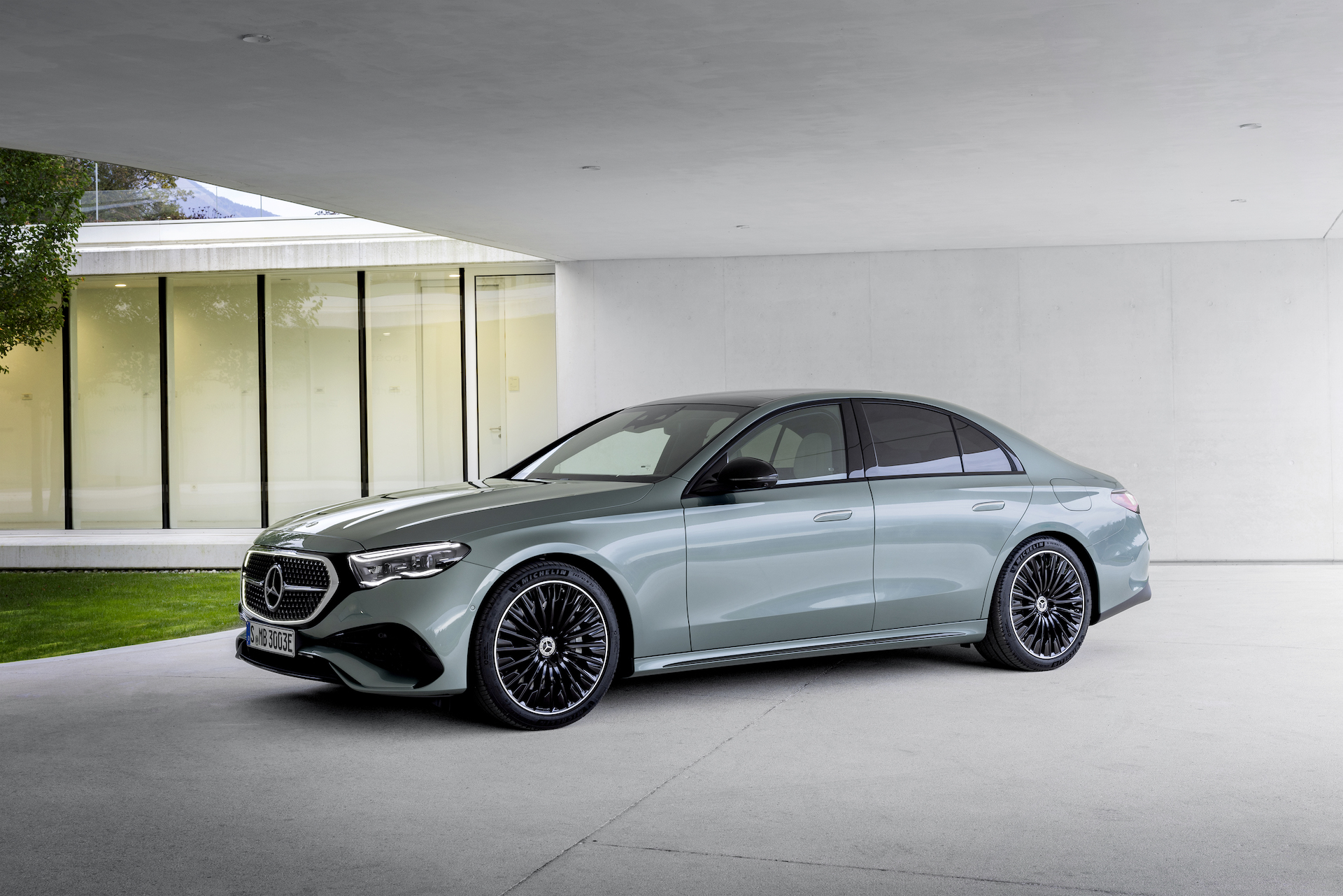Consider the latest E-Class even more of a luxury liner than before. It’s softly tuned, and its mild-hybrid setup masks its formerly thin low-speed torque. Set to soak up the road with strong acceleration and a supremely relaxed ride, it’s an 8 here, with a point for the former and two points for the latter.
For now, all E-Class sedans come with all-wheel drive. In the past Benz has filled out the family with rear-drive editions, but none have yet been announced.
How fast is the Mercedes-Benz E-Class?
We’ve not driven the E 350 4Matic, which comes with a 2.0-liter turbo-4 that turns out 255 hp and 295 lb-ft of torque, though we’ve driven it in the prior-generation model and in a wealth of other Mercedes products. In other models, it’s relatively willing to wind out and tap all its power—and now has a mild-hybrid system that adds up to 23 hp and 148 lb-ft to boost low-end torque. Standard all-wheel drive slows this E-Class down a tick—but it still takes just 6.1 seconds to reach 60 mph, on its way to a 130-mph top speed.
At present, Benz has no plans to bring over a plug-in hybrid E-Class, but AMG editions are assured.
We’ve spent all our time in the 3.0-liter turbo-6 version, and the E 450 4Matic improves upon the turbo-4 not just in raw speed, but in silken response. With the same mild-hybrid system but with a total of 375 hp and 369 lb-ft (not to mention a curb weight of nearly 4,400 pounds), it rushes in quiet urgency to 60 mph in 4.4 seconds, to the same electronically limited top speed of 130 mph. With its 9-speed automatic, the E 450 can be caught off-guard with full-throttle leaps from very low speeds, but in almost all other user cases it clicks off gearchanges with minimal intrusion.
On a new chassis with a standard four-link front and five-link rear independent suspension, the E-Class can be upgraded like our test car with an air suspension, adaptive damping, and rear-wheel steering that turns the rear wheels in the opposite direction of the fronts by up to 4.5 degrees to ease low-speed maneuvers, then turns them in phase up to 2.5 degrees with the fronts for higher-speed stability.
The air suspension comes in handy to cut fuel consumption—it lowers the car at highway speeds—but it’s entirely responsible for generating an extremely well-cushioned ride, even when the drive-mode selector spins from comfort to sport mode.
With each passing generation, the E-Class has grown more and more relaxed in its non-AMG editions. This year that’s no different: it’s adept at cruising over the worst pavement, even speed bumps, with casual indifference. Its steering sets into curves and corners delicately, with very little counterweight but with precise ease. In comfort mode, its air springs and adaptive dampers are doing as much as possible to keep as little of the road from intruding into the cabin—but even in sport mode it hardly thocks over pavement seams, choosing to drift over them and to leave only tire noise in the wake. Rear-wheel steering allows lots of low-speed steering angle with almost no force required—it’s almost a spin-the-dial steering sensation as it slips into tight parking spaces—but at extralegal highway speeds it locks in and firms up, still with a light touch on the wheel. It’s as good as any large premium-luxury sedan of the recent past in that regard, and it’s clearly been set up to reserve much territory for coming AMG versions, though we hope the E 450’s squishy brake pedal gets tuned better for that higher duty.


